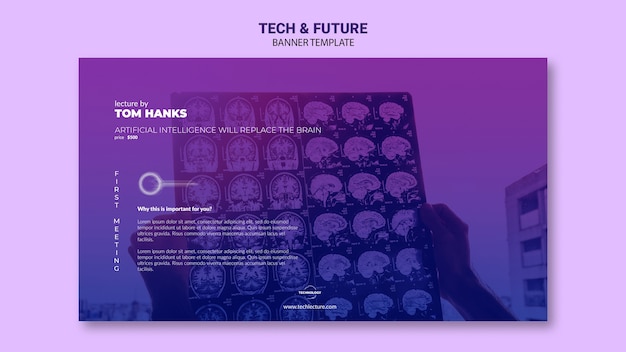Facts about the human brain

The human brain weighs about three pounds.
It is estimated that the human brain consists of about 86 billion neurons.
Despite its weight, the human brain consumes only about 20% of the body’s oxygen.
The brain is the most complex organ in the human body.
Your brain generates enough electricity to power a small light bulb.
There are no pain receptors in the human brain, which is why brain surgeries are often performed while the patient is awake.
The brain is responsible for controlling all bodily functions, even those we are not consciously aware of.
The brain is composed of approximately 75% water.
The brain processes information at a speed of approximately 268 mph.
By the age of two, the human brain is already about 80% of its adult size.
The brain contains over 100 trillion connections, called synapses.
The human brain can hold up to 2.5 petabytes (1 million gigabytes) of information.
The brain is divided into two hemispheres, each with different functions.
The left hemisphere of the brain controls the right side of the body, while the right hemisphere controls the left side.
The brain reaches its full maturity around the age of
The average human brain produces around 70,000 thoughts per day.
It is estimated that the human brain can store up to 100 terabytes of memories.
The brain uses about 20% of the body’s total energy, even though it only makes up about 2% of the body’s weight.
Facts about the human brain part 2
The brain is responsible for controlling emotions and influencing behavior.
The human brain is capable of learning new things throughout a person’s entire life.
The brain is the control center for all five senses: sight, hearing, taste, smell, and touch.
Memories are not stored in one specific location within the brain but are rather distributed throughout various regions.
The brain is composed of approximately 60% fat, making it the fattiest organ in the human body.
The human brain can process information faster than the fastest computer in the world.
The brain is constantly changing and creating new neural pathways based on experiences and learning.
The brain releases powerful chemicals called neurotransmitters to communicate between neurons.
The brain uses about 20% of the body’s total oxygen supply.
The brain processes information through a network of interconnected neurons.
The size of the brain does not necessarily determine intelligence; it’s the quality of connections that matter.
The brain can produce its own painkillers, known as endorphins.
The human brain can detect patterns, whether real or imagined, and create meaning from them.
The brain is responsible for regulating sleep and waking patterns.
The brain is not fully matured at birth; it continues to develop well into a person’s late teens.
The brain can prioritize information, allowing us to focus on what is important at any given moment.
The human brain is the only organ capable of naming itself.
The brain can process visual information faster than auditory or tactile information.
The brain’s surface, known as the cerebral cortex, is folded to increase its surface area without taking up additional space in the skull.
The brain receives and processes information from the outside world through various sense organs.
The brain is responsible for controlling voluntary and involuntary movements.
The brain is constantly adapting and making predictions based on previous experiences.
The brain can create new neural connections through a process called neuroplasticity.
The brain releases dopamine, a neurotransmitter associated with motivation and reward.
The human brain is capable of recognizing faces almost instantaneously.
The brain can generate up to 50,000 thoughts per day while the body is at rest.
The brain is a powerful organ that enables us to think, feel, and experience the world around us.

